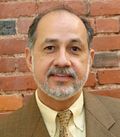Y vivió Heber 430 años después de haber engendrado a Peleg, y tuvo otros hijos e hijas.
(Genesis 11:17)
Peleg vivió 30 años, y fue padre de Reu.
(Genesis 11:18)
Y vivió Peleg 209 años después de haber engendrado a Reu, y tuvo otros hijos e hijas.
(Genesis 11:19)
Reu vivió 32 años, y fue padre de Serug.
Y vivió Reu 207 años después de haber engendrado a Serug, y tuvo otros hijos e hijas.
(Genesis 11:21)
Serug vivió 30 años, y fue padre de Nacor.
(Genesis 11:22)
Y vivió Serug 200 años después de haber engendrado a Nacor, y tuvo otros hijos e hijas.
(Genesis 11:23)
Other publications related to "Genesis 11:20":
Genesis 11:20 - Cross Reference
Nacor, de Serug; Serug, de Ragau; Ragau, de Peleg; Peleg, de Heber; Heber, de Sala;
(Luke 3:35)
